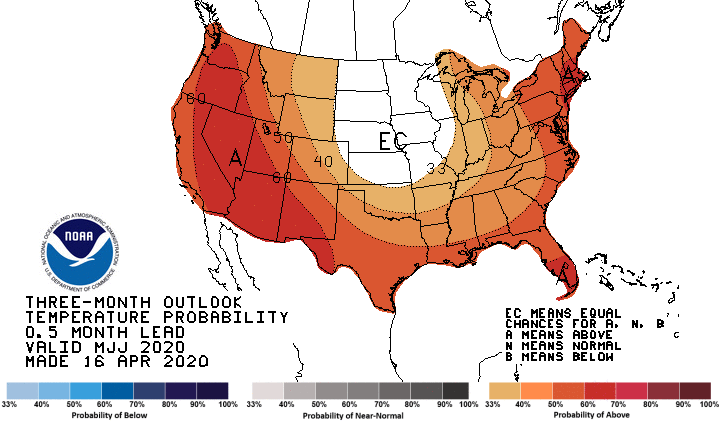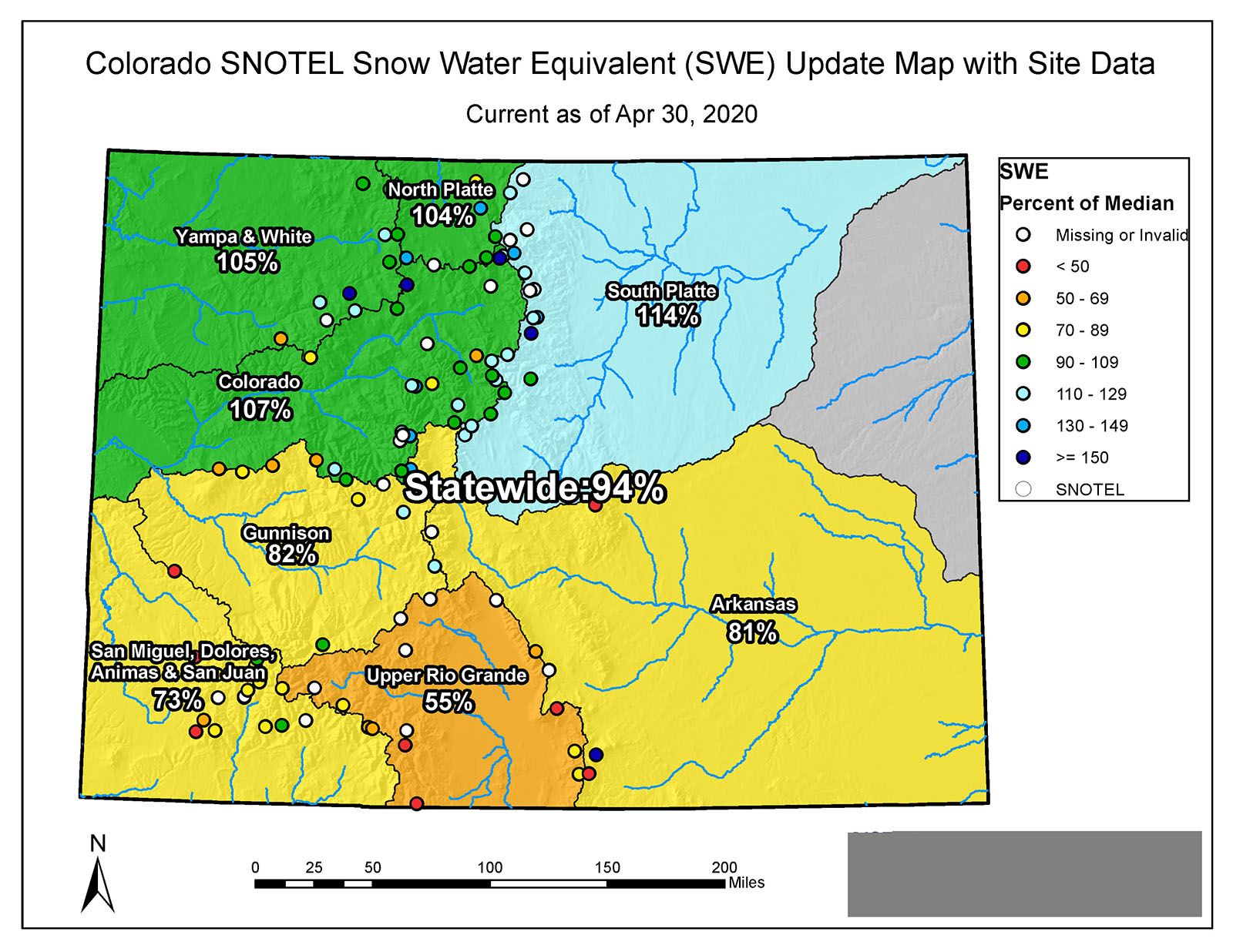Arkansas River Basin snowpack has dropped to 81% of median, but upper basin snowpack remains above average, according to snow telemetry sites operated by the Natural Resources Conservation Service.
NRCS hydrologist Karl Wetlaufer presented snowpack and precipitation data at the April meeting of the Governor’s Water Availability Task Force, reporting that statewide snowpack peaked at 104 percent of normal on April 8.
Wetlaufer reported average snowpack for the state as a whole but noted that the southern mountains and eastern plains already present “notable drought concerns,” heightened by NOAA long-term forecasts predicting warmer than average temperatures through July.

The U.S. Drought Monitor shows the southern 29 percent of the state already experiencing severe drought, 25 percent of the state experiencing moderate drought, and 13 percent experiencing “abnormally dry” conditions.
Thirty-three percent of the state in north and central Colorado remains drought-free, and in April, Boulder broke its previous annual snowfall record set in the winter of 1908-09.
The State Engineer’s Office reported above-average reservoir storage around the state except for the Arkansas and Rio Grande basins. Storage in the Arkansas Basin is at 116,840 acre-feet, or 93 percent of average. Storage in the Rio Grande Basin is at 83 percent of average.
The Bureau of Reclamation forecast for Western Slope water imports into the Arkansas Basin is “slightly above average” at 66,000-70,000 acre-feet. The bureau operates the Fryingpan-Arkansas Project reservoirs, including Twin Lakes.
Since much of the water for the Voluntary Flow Management Program is released from Twin Lakes, the projected water imports bode well for the summer boating season.
Planning Branch Chief Rocco Snart of the Colorado Division of Fire Prevention and Control reported that, based on drought conditions and climate models, 2020 is shaping up to be an average fire year.
Based on the 10-year period from 2007 to 2017, Snart said an average fire year is 4,553 fires that burn 131,000 acres. So far this year, wildfires have burned almost 4,000 acres in Colorado.
Snart also noted, however, that resource availability “may be a problem” because of the COVID-19 pandemic.
The next Water Availability Task Force meeting is scheduled for May 28. Additional information is available on the Colorado Water Conservation Board website.





